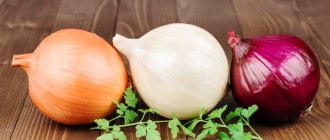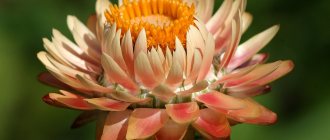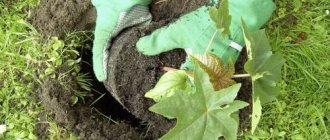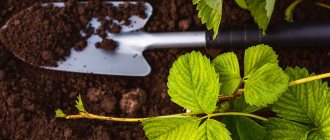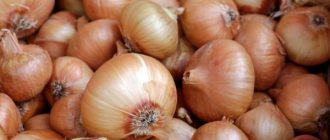Carnation. Care Tips
Carnation is one of the most favorite garden flowers.
Beautiful inflorescences, a wide variety of varieties and varieties, long-lasting flowering and a pleasant aroma are just some of the advantages of this plant. Different types of cloves and hybrids created on their basis are used in cultivation. Carnation (Dianthus) belongs to the Carnation family. The genus includes about 40 species of annual and perennial plants found in Europe, North Africa, and Asia. Many species are characteristic of the temperate zone; in the wild, they grow in meadows among grasses.
Some types of cloves have been cultivated in different countries for several centuries; many beautiful varieties have been bred.
Garden carnations are perennial plants, but in areas with severe frosty winters they periodically freeze out, so they are usually cultivated as annuals and bloom in the year of sowing. There are also species that are grown as biennials, that is, in the year of sowing, these carnations develop only rosette leaves, and bloom in the second year after wintering. In order to preserve plants in winter, plantings are mulched with dry peat, fallen leaves, and spruce branches.
The stem of carnations is knotty, smooth, herbaceous, and in some species semi-lignified. The leaves are linear, opposite, elongated, and the color is green, glaucous or bluish-gray.
The flowers of different types of carnations are single or collected in inflorescences. In natural species, the corollas of flowers consist of five petals, colored in white, pink, red, and crimson shades. Cultivated carnations differ in size and color: small and large, simple and double, with a subtle aroma and odorless, the petals can have simple or dissected edges. Some garden varieties have flowers with corrugated, fringed petals.
The color of garden carnation flowers is more varied than that of wild species: in addition to white and pink, they are cream, yellow, burgundy, purple and even multi-colored. Among the varieties of Turkish carnations, there are many different color options: with spots and specks on the petals, a contrasting border, with a dark burgundy center and white or pink edges.
The fruit of the clove is a multi-seeded capsule with flat black seeds. Depending on the variety and method of cultivation, seeds can be sown in the spring (for seedlings or in open ground). They also practice sowing under snow in the fall.
The most commonly used species in floriculture are: Chinese carnation (Dianthus chinensis), Turkish or bearded carnation (Dianthus barbatus), pinnate carnation (Dianthus plumarius), garden or Dutch carnation (Dianthus caryophyllus).
Particularly valued is the remontant carnation, in which flowering is repeated many times during the season. Tall varieties of remontant carnations are grown in greenhouses to obtain high-quality cuttings throughout the year.
Using carnations in garden design
Different types of carnations are grown in gardens; they differ in the length of the peduncles, the size and shape of the inflorescences, therefore they are used in different ways. Large-flowered carnation (Dianthus caryophyllus) is used for cutting. To obtain long, straight stems and large inflorescences, special technologies are used. In an ordinary garden, such flowers are inevitably damaged by the wind.
Low-growing carnations are usually planted along the edges of flower beds; varieties of Turkish carnations are suitable for ridges and borders. Some types of Chinese carnation are capable of growing widely and are well suited for rock gardens. Miniature perennial carnations can form low, thick cushions, green mats
The remontant Chinese carnation (Dianthus chinensis) is more suitable for growing on balconies. You can buy seeds or seedlings of dwarf varieties that are weather-resistant at flower shops.
Decorative lawn (Moorish lawn) has been particularly popular lately: a mixture of grasses combined with unpretentious perennial flowers, usually wildflowers and meadows. This mixture often includes Dianthus deltoides.
How do carnations reproduce?
There are several known ways to propagate this perennial flower:
Layers appear with the help of moist soil and a cut in the stem. Long side shoots are cut from below, fixed, sprinkled with soil and watered. Soon roots appear and a green sprout sprouts. It is separated from the clove bush and planted in the ground.
Sometimes layering is obtained from a lush bush with side branches, sprinkled with earth. At the same time, water regularly. After some time, the branches take root. Then they are transplanted separately.
Propagation of any type of carnation by cuttings is very popular among gardeners. This is usually done in early June. In a carnation bush, select long side shoots with at least four leaves. The shoots are freed from leaves, and several cuts are made between the nodes on the stem. It is useful to dip the cuttings in a growth stimulator. The cuttings are planted in a substrate prepared in half from fertile soil and humus, adding a little sand. The cuttings are planted and covered with transparent material to create a kind of greenhouse. After three weeks they take root and sprout.
Full flowering of a new carnation bush can be expected in a year.
In early spring, carnations can be propagated by dividing the bush. The plant is completely dug up and the root section is divided into several separate bushes. Each of them must have a healthy and developed root and a large side shoot. The resulting young bushes are planted in the ground. Care for it like an adult plant. Flowering will begin next year.
Tips for caring for cloves
Most carnations are unpretentious plants that do not require any complex care. It is enough just to regularly cut off dried inflorescences to resume flowering (in remontant varieties) and preserve the decorative appearance of the bush.
Sometimes thaws have a negative effect: in thawed, sun-warmed places, carnations quickly begin to grow, and then frosts damage them. In the fall, experienced gardeners cover non-frost-resistant hybrids with cut stems of dahlias and peonies so that the branches lie freely. They hold the snow and protect the bushes from the sun.
Garden location and lighting . All carnations prefer well-lit places without stagnant water. They grow well among large stones and on slopes.
The soil . Carnations prefer fertile, neutral garden soil. They do not tolerate stagnant water. In areas with high groundwater levels, it is better to plant carnations in raised beds.
Fertilizer . Before flowering, you can apply complex mineral fertilizer, but you cannot use fresh manure.
Wintering . The pinnate carnation (Dianthus plumanus) is considered to be the most frost-resistant. All varieties that came from crossing with it are resistant to cold. It is believed that low and small-flowered carnations can overwinter without problems. Only severe frosts (-30-40) in the complete absence of snow can become dangerous for them.
Sometimes thaws have a negative effect: in thawed, sun-warmed places, carnations quickly begin to grow, and then spring frosts damage them. In the fall, experienced gardeners cover non-frost-resistant hybrids with cut stems of dahlias and peonies so that the branches lie freely. They hold the snow and shelter the bushes from the warming sun.
How to prune Turkish carnations after flowering
Bearded carnation, or as it is popularly called, Turkish carnation, also needs timely pruning. Due to its high winter hardiness, this type of flower is usually grown as a biennial crop. The waiting time for its buds to open is compensated by early flowering, which begins in early summer. In addition, this type of plant is capable of blooming twice per season, decorating the flowerbed and adding brightness and sophistication to the landscape.
If you are not growing Turkish cloves as a mother plant for seed production, pruning can be done immediately after the first flowering. Before pruning Turkish cloves , it is recommended to disinfect gardening tools to avoid the risk of plant contamination with a pathogenic infection.
It is necessary to trim the shoots at a level of 10–15 cm from the surface of the ground. After this, the bushes need to be watered and root fertilized with a complex nutritional preparation. A month after pruning, the carnation will delight you with a new lush bloom of bright buds.
At the end of autumn, before frost sets in, it is advisable to cover the bearded carnation. Despite the fact that this species is resistant to cold, it is still better to protect the plants from freezing. In this case, the flowers will survive the winter well, and you will not have to worry about your flower garden.
Pruning different types of carnations in the spring, after flowering or before winter is a fairly simple and not labor-intensive agricultural practice that ensures not only repeated flowering, but also the health of the plants in general.
Perennial Chinese carnation, planting and care
The perennial Chinese carnation is a frequent visitor to summer cottages. Planting and growing Chinese carnations is not difficult. At the same time, the plant quickly takes root on almost any soil. These perennial flowers can be planted in flower beds, mixborders, alpine hills and ridges. They, along with mimulus and low-growing dahlias, are used as border plants; thanks to their bright and variegated flowers, they look great against the backdrop of green lawns. The perennial Chinese carnation is used in garden landscaping due to its decorative properties and ease of care.
Peculiarities of propagation of perennial carnation
If Turkish carnation is already growing at your summer cottage, propagation by cuttings is the most reliable way to obtain planting material while preserving all the qualities of the mother bush. Cuttings are carried out in June. To do this, cut healthy cuttings 10 cm long. The lower cut is made oblique at a distance of 1-1.5 cm from the knee of the stem.
The prepared material is planted in sandy soil, well moistened and covered with film. After 20 days, the cuttings will take root and in the second half of August they can be planted in a permanent place.
Turkish carnation - propagation by cuttings
Cirrus, Dutch and Turkish carnations take root well, propagation of which is carried out by dividing the mother bush. It is carried out in the spring or after flowering. The cuttings are cut from the rhizome with a knife or a shovel and planted in a new place at a distance of 30-40 cm.
Dividing a garden perennial carnation bush
Brief description and varieties of flowers
This beautiful perennial plant has been cultivated for centuries. During breeding, a huge number of varieties of Chinese carnations have been created. Their distinctive feature is the bright color of the buds and ease of care. These flowers grow in the form of a dense bush. The height of their stems reaches 45-50 cm. On sale you can also find dwarf varieties of Chinese carnations, the stems of which do not exceed 15-20 cm. Narrow leaves are located on the stems in pairs. Some modern varieties have curled leaves. The stems end in flowers of various colors. They can be white, cherry, burgundy, red, pink.
For landscape design of a dacha, there are different varieties of such perennial carnations: simple , semi-double , double . Their color can be one- or two-color, variegated, with a border or an “eye.” The size of the flowers of this type of Chinese carnation varies. They can be large, small, medium. Moreover, the smaller the flowers, the more of them bloom on the bush at the same time. Plants form seeds in fruit pods in August.
Seating on site
It is better not to touch a flowering bush. Let it bloom, and for propagation you can choose those that have not yet bloomed. But if this fails, you can then thin out the seedlings and plant the removed sprouts separately in the same bed; such seedlings will also be easily accepted. In August - September, all sprouted seedlings are planted in the places where the carnations will grow and bloom the next year. They are planted densely enough so that they form a “carpet”. Such plantings look attractive and prevent weeds from growing and cover the roots of perennials.
Read also: How to plant thujas in the fall
Planting Chinese carnation seeds in open ground
Place for sowing on the site
For planting Chinese perennial carnation, we select only warm, well-lit areas. It develops well and blooms even in light partial shade. Soils should be fertile, light, well drained. This plant does not tolerate stagnant water. Before planting flowers, we fertilize the soil with organic matter and mineral fertilizers. Liming the soil is also necessary.
If we plant seeds
Planting perennial Chinese carnations in the country can be done in the following ways: seeds or grown (purchased) seedlings. To cultivate flowers using the first method, in May we place the seeds on the surface of loose, well-moistened soil. Since this plant is distinguished by its cold resistance, there is no need to cover them with plastic film or glass. Sprinkle the sowing of Chinese clove seeds with a thin layer of vermiculite or good compost.
How to sow seedlings
To independently grow Chinese perennial carnation seedlings at home, in March we sow the seeds in boxes with a light, nutritious, well-drained substrate. Sprinkle them with a thin layer of soil and cover them with white paper on top. For germination, we maintain the temperature at 16-20 degrees. The soil in the boxes should be moist. After 7-10 days, flower shoots appear. During this period, we reduce the room temperature to 14-15 degrees.
Dive and landing at the dacha
A few days later, when the first pair of true leaves appear on the seedlings, we plant them in peat pots with a nutritious soil mixture. When the seedlings are well established, we plant them in a permanent growing area on the plot directly with the pots. We transplant the plants into open ground at the end of May.
Turkish carnation flowering in the first year. Growing Turkish cloves from seeds
Carnation “Nigricans” performs “in the corps de ballet” in the first year of its life, shading other flowers, and in the second year it takes on the main role.
In central Russia, it is customary to sow Turkish carnations directly into open ground. There is no particular point in growing seedlings, since the plant is unpretentious and easily tolerates frost. The big advantage of Turkish carnation is that it does not require attention during the most difficult time for gardeners - in the spring.
It can be sown in summer, at the end of June or beginning of July. At this time, everything else is already growing in full swing, and some things have even been harvested: lettuce, kohlrabi, radishes, spinach, etc. It is in these vacated places that a growing bed for Turkish carnations is set up.
Growing Chinese carnations in open ground
Under favorable weather conditions, the first shoots of perennials appear already on the 7-10th day. The sprouts are very sensitive to lower temperatures at night, so we cover them with plastic wrap. The most suitable temperature for the germination of Chinese clove seeds is 16-18 degrees. With a strong increase in air temperature, the seedlings become very elongated. We transplant young plants into flower beds when they are strong enough. Pinching seedlings above 2-3 pairs of leaves promotes tillering of flowers.
Growing carnations: planting
Planting location: Carnations of all types like bright, sunny areas. Grassweed, Turkish and feathery carnations can grow in partial shade.
Soil: Carnations prefer well-drained, fertilized soil with a pH close to neutral. If the site is close to groundwater, then carnations should be planted in elevated flower beds.
Carnations are propagated by seeds and vegetatively (cuttings, dividing the bush and layering).
Annual (Shabo, Chinese) and biennial cloves are grown by seeds. In this case, plants obtained from seeds may not retain the varietal color. Sowing is done in January-February in pots with a prepared substrate of leaf soil (2 parts), peat humus (2 parts) and sand (1 part). The seeds are distributed along the grooves (depth 0.3 cm), sprinkled with sand, and covered with film. Crops are kept at +12-16°C. After 7-10 days, shoots appear. During this period, you can use backlighting. When the seedlings grow 2 pairs of leaves, they are picked into separate cups. To keep the bushes compact, the growing point must be pinched. Seedlings are planted in the beds in the last ten days of May or in the first week of June, maintaining a distance between plants of at least 20 cm.
Perennial carnations are sown in early spring or autumn directly into the ground. Such plants will bloom only in the second year.
All types of carnations, except annual ones, are propagated by cuttings. It is better to harvest cuttings in early autumn or spring so that young plants take root before the summer heat or frost. For cuttings, half-ripe developed stems are needed. They are divided into pieces measuring 3-9 cm (the length depends on the type of clove). It is better to take cuttings from the middle part of the shoot. The cut on the shoot is made under the node. The two pairs of lower leaves are removed. Using a sharp knife, cut 1/3 of the stem deep between the two lower nodes. The cuttings are planted in a prepared substrate (sand + perlite/vermiculite), covered with film or placed in a greenhouse until rooting (15-20 days).
Carnations with long shoots are grown by layering. In the section of the stem between the nodes, an incision is made to 1/3 of the thickness, bent to the ground, fixed with sand and watered. After the roots appear, the young plant is separated from the mother plant and planted separately.
Etymology of the name
The Russian name “Gvozdika” is borrowed from the Polish language from the word “Gvozdik”, which has German roots. The fact is that the Germans called the flower that way for its pleasant smell, similar to the smell of dry buds of a clove tree.
Garden strawberries - description, varieties, planting and care
Azalea - description, home care
The scientific Latin name "Dianthus" is derived from two Greek words "dios" and "anthos", which translate as "divine flower". It is no coincidence that Carl Linnaeus gave the flower exactly this name: in the treatise of the ancient Greek scientist Theophrastus, “A Study on Plants,” Carnation was called the “Flower of Zeus.”
Is it necessary to cover Turkish cloves for the winter?
In those regions where winters are quite harsh, cold-resistant carnations still need care. Experienced gardeners recommend, in preparation for winter, to mulch the soil in flower beds and cover it with a layer of spruce branches or peat. In this way, you can protect the clove from severe frosts. With the onset of spring, the shelter is not removed immediately. It would be advisable to wait until all the main temperature changes have passed, the flower has already begun to grow on its own, and new shoots are visible. Then you can completely remove the winter shelter. To protect from the bright sun, which can also burn with direct hot rays, place a spruce branch for the first few days. It will cover the flower from both wind and sunlight. With the onset of good stable weather, the cloves are opened completely.
Summer flower beds, which decorate our garden plots, are pleasing to the eye, giving aromas and a good mood. Today we will talk about such a popular flower as the perennial Turkish carnation, which can give joy for a long time if you place it in your garden at least once.
Read also Tomato king bell reviews photo yield
Cloves have been a favorite of many European peoples for many centuries. There are many species, among which we can distinguish the Turkish clove, the inflorescences of which are simple or double. Perennial Turkish garden carnation, planting and care, photos - today we’ll talk about this in more detail.
Characteristics of Perennial Dianthus
The peculiarity of the perennial garden carnation is its short flowering. In mid-latitude regions it is grown mainly as a biennial.
The Carnation bush grows to a maximum of 60 cm in height. The rhizome is underdeveloped, located close to the surface of the earth - about 10-20 cm.
The stem of the Clove, although thin, is quite strong. The leaves are narrow, dark green or green with a bluish tone.
Garden carnation flowers can be single or collected in small inflorescences. Depending on the variety, the flowers can be either simple or double or semi-double.
The fruit is a capsule in which brown or brown colored seeds ripen.
Clove diseases
Caring for garden carnations includes mandatory disease prevention and getting rid of plant pests.
Unfortunately, carnations, like other flowers, are susceptible to certain diseases:
The heterosporiosis fungus attacks cloves when there is an excess of moisture and nitrogenous fertilizers in the soil. Brown spots with reddish rims appear on the leaves of the plant. The plant begins to dry out and die. In this case, the affected plants are burned and the soil is treated with Bordeaux mixture. To prevent this disease, bushes are treated with Nitrafen or other similar drugs twice a season.
Gray rot - botrytis appears on flowers during periods of prolonged rains, cold weather, and in the absence of sunlight. Sometimes the disease is provoked by excessive density of planted plants. They are covered with a gray smoky coating. Such flowers must be destroyed. Prevention: avoid excess moisture and spray with fungicides.
Treatment with fungicidal preparations should not be carried out on sunny days with strong winds. The optimal conditions for this are dry and cloudy weather.
Rust is also caused by fungus. In this case, the stems and leaves are affected, they turn yellow and dry out. The disease is provoked by a lack of potassium in the soil and an excess of nitrogen, excessive waterlogging. Affected plants are removed and sprayed with fungicides, for example, Bordeaux mixture. Prevention consists of moderate watering and weeding of weeds that carry pathogens.
Rhizoctoniosis leads to rotting of the carnation root system at the root collar. The plant stops receiving nutrients. Its leaves turn yellow, wither, and its roots become rotten. To save plants, a universal and effective fungicide is suitable - the drug "Maxim". Prevention requires constant loosening of the soil and moderate watering.
Fusarium wilt - coloring of the stem in a reddish color, yellowing leaves, rotting roots. As a result, the flowers stop blooming and the plant dies. The cause of the disease may be too much humidity, acidic soil and hot weather. It is impossible to cure such plants; they are dug up and burned. Protect cloves from this scourge with mulching and moderate watering.
Popular types of Perennial Dianthus
In the huge variety of garden carnations, it is not easy to choose the type that suits your liking. However, experienced gardeners already have their favorite species. Let's get acquainted with the most common ones.
Dianthus dutch
The species appeared thanks to breeders who combined several types of the most beautiful Carnations. It is characterized by long flowering, which distinguishes this species from the rest. It blooms from early summer until the first autumn frosts. The flowering is very bright, abundant and beautiful.
In regions with a warm year-round climate, this species blooms throughout the year. It rests only during the rainy season.
Carnation pinnate
The species is represented by a neat bush. The foliage is bright green. The name of the species is associated with the unusual flower petals, which have longitudinal slits that make them look like feathers. The diameter of the flower is 3 cm. The color of the flowers is very different: from white to dark burgundy. Flowering time is June-July.
Carnation Shabo
It stands out for its colorful fluffy double flowers with a very pleasant persistent aroma. Flower petals are often corrugated, slightly curved, simple or folded.
Varieties and varieties
When choosing a variety, it is worth considering the size of the plant. All varieties are divided into two categories according to height:
- Tall - 30-60 cm. As a rule, their inflorescences are larger in diameter, but the total number of buds per bush is much less.
- Low-growing - up to 30 cm. They are ideal for rockeries and rock gardens. They form dense clumps covered with inflorescences.
Tall
The best perennial tall types of garden carnations for garden cultivation are:
- Turkish (bearded) . The height of the bush is up to 60 cm. The most common species, which has been cultivated since the 12th century. In the wild, it prefers groves, forests, sandy river banks, and meadows. The bracts have petals with a ciliated edge. They often sell mixtures of different varieties of this group, which form a multi-colored mat of solid clumps.
- Dutch (repairable). Height up to 1 m. The main feature is flowering, repeated several times during the summer. It is used not only as a garden crop, but also as a greenhouse crop, since it is heat-loving, but easy to care for.
- Shabot . The perennial plant manifests itself only in the southern regions, since it is not able to withstand the low temperatures of the winter months. It has bluish-green leaves with a waxy coating and large inflorescences – up to 6 cm in diameter. Flowers last a long time in vases after being cut.
- Grenadine. Despite its large height - up to 70 cm - it branches strongly. Flowers can be single or double. It overwinters in open ground, in the first season it increases the vegetative mass, and in the second year it shows abundant flowering, which continues throughout the summer.
- Chinese. With a low bush 10-40 cm high, it forms large inflorescences - about 7 cm in diameter. Flowering occurs already in the first year after sowing.
Turkish (bearded)
Dutch (remontant)
Shabo
Grenadine
Chinese
Chinese
short
Low-growing varieties have a second name - carpet, because they grow quickly and reliably cover the ground, preventing weeds from occupying the territory. They also bloom earlier than their tall relatives. Among the low-growing varieties of garden perennial carnations, the following are most widespread:
- Alpine . A bush up to 25 cm high with original red flowers with a white dot in the middle. It loves rocky areas that meet natural growing conditions.
- Grass (deltoid). At a height of 15 cm, it forms dense turf with a diameter of 40-45 cm. Flowering continues all summer, after which a large number of seeds are sown on the ground, each year covering the ground more densely with new clumps.
- Cirrus. The main feature is the abundant flowering, during which the leaves are almost invisible through the inflorescences. The petals have a strongly indented fringed edge.
- Sandy. It thrives best in sandy soils, where it blooms from June to September.
- Gray. Remains decorative during the winter months, keeping the foliage blue-gray.
- Field. One of the most unpretentious and easy-to-care species that can be found in the wild. In addition to its decorative qualities, it is valued for its medicinal properties.
Alpine
Travyanka
Cirrus
Sandy
Gray
Field
Planting Carnation
In order for the garden Carnation to be comfortable in the garden, it needs to create favorable conditions for growth and development.
Illumination. Site selection
Garden carnation, like many plants, prefers a sunny, dry area. If you plant it in the shade or in an excessively humid place, you may simply not wait for it to bloom beautifully. The best place is an area where there is light partial shade in the afternoon.
Soil composition
Carnation prefers neutral or slightly alkaline soil. The best option is loam or sandy loam or peat soil. If the acidity is high, then slaked lime, ash or dolomite flour should be added to the soil. To lighten the soil, you can add sand or peat to it.
Boarding time
Seeds of perennial garden Carnation must be added to open ground in March, but on the condition that the air temperature should not be lower than +15°C. A shallow furrow is made in the garden bed, seeds are laid out, and sprinkled with nutritious soil mixture. The grooves with the seeds are spilled with water, and the top of the bed is covered with film. At a temperature of +18°C, the first shoots begin to appear.
Preparation of planting material
To see Carnation bloom in the first year, it is better to grow it as seedlings. Sowing of seeds is carried out at the end of winter - at the beginning of spring.
Before you start sowing the seeds, it is recommended to place them in water for a day. Containers for growing seedlings are filled with light loamy soil.
The swollen seeds are carefully laid out on top of the soil, lightly sprinkled with fine river sand on top. The container is covered with glass or film on top, and then transferred to a dark, warm place. The optimal temperature is +18°С…+20°С. Under such conditions, the first shoots will appear within a week. From this period, the seedlings are transferred to a bright place. If the air in the room is dry, in addition to watering, it is necessary to periodically spray the seedlings.
After about a month, you can start picking the seedlings. The sprouts must be pinched - this will stimulate the rapid growth of the stem and the growth of the root system.
Method of planting Carnation seedlings in open ground
Before you begin planting seedlings in a permanent bed, you need to dig planting holes, the depth of which should be equal to the size of the root ball. The distance between the holes should be at least 15-30 cm. To keep the top layer of soil light, it is recommended to mix it with sand and rotted compost.
Planting is carried out as follows: the seedling is lowered into the planting hole, the roots are sprinkled with light soil, and then watered with water at room temperature. The soil should be loosened from time to time.
Growing carnations: choosing planting material
You can grow cloves by seeds, seedlings, rooted cuttings, or cuttings of bushes.
Seeds are the cheapest way to purchase planting material. Perennials grown from seeds will bloom only in the second year.
Seedlings and rooted cuttings can be purchased at nurseries or greenhouses.
Delenki bushes do not appear in mass stores. They can be purchased from neighbors in the country.
You need to choose planting material taking into account the climatic conditions of your region and the purpose of using these flowers (in rockeries, alpine hills, for cutting, as a potted crop).
Caring for garden perennial Carnation in the open ground
Growing garden carnation on your plot is not difficult, especially if you follow some rules.
Watering
The main rule is not to overdo it with watering. Cloves tolerate dry soil better than excessively wet soil. Therefore, watering should be moderate and carried out only after the top soil has dried. It is necessary to water only the root soil; water should not get on the stems and leaves. After watering, the soil should be loosened shallowly so that it does not form a crust.
Feeding
In order for the flowering to be bright and abundant, Carnation needs fertilizing. They must be carried out throughout the growing season. The first feeding is carried out in early spring, then during the bud formation phase and the third time during flowering.
Attention! Garden cloves should not be fed with fresh manure, as well as potassium-containing fertilizers at the same time as phosphorus and nitrogen fertilizers. It is also necessary to apply nitrogen fertilizers very carefully. If there is an excess of them, the plant may be affected by a fungal disease.
Pinching stems and inflorescences
Wilted inflorescences and shoots must be pinched. This procedure will promote the germination of new stems and the appearance of buds. In addition, pinching significantly slows down the aging process of the flower, which means that Carnation will delight you with its fragrant, beautiful inflorescences for a long time.
Preparing for winter
At the end of flowering, all flower heads are cut off and the stems are trimmed. The optimal height of the bush is about 10 cm. To prevent the plant from freezing in winter, it must be covered, for example, with spruce branches or non-woven covering material. Some gardeners dig up the roots of the flower, replant them in pots and move them indoors.
Diseases. Pests
As a rule, Carnation shows resistance to various diseases and pests. However, under unfavorable conditions, for example, excessive dampness, sudden changes in air temperature, the predominance of nitrogen in the soil - all this can cause fungal diseases. A sign that Carnation is infected with a fungus is white or brown spots with a red rim on the leaves. Such specimens should be urgently treated with a fungicide, for example, Topaz or Fundazol.
From time to time you should check the undersides of the leaves, where spider mites can settle. Aphids also love carnation. You should get rid of such uninvited guests with the insecticides “Aktellik”, “Vertimek”, “Fitoverm” or “Aktara”.
Growing cloves: care
Caring for carnations is simple and consists of watering, weeding, loosening, fertilizing, and covering for the winter.
Watering is carried out 2 times a week in the morning, 12-15 l/m2. Depending on the time of year, weather and physical properties of the soil, watering must be adjusted. If the plants are located in lowlands, then reduce the amount of watering, otherwise the carnation will die from root rot. Water flowers at the root, not from above.
After watering, the soil around the plant bushes must be loosened so as not to provoke the development of fungal diseases.
Fertilizers have a good effect on varietal carnations. In autumn, the area intended for growing cloves is dug up with organic fertilizers (humus, peat compost) at the rate of 2 kg/m2. Fresh manure should not be used. Carnations need nitrogen when growing foliage, so it is added (5-6 g/m2) after the planted plants have adapted to a new location. During the period of tillering and budding, plants are fed with potassium and phosphorus fertilizers (4-5 g/m2). You can use complex flower fertilizers, for example, Agricola, Bud, Ideal, etc.
Carnations are resistant to wintering in open ground. In snowless winters, severe frosts (-30-40°C) can become dangerous. In spring, these flowers can also suffer from thaws: sprouts appear in thawed patches, and at night frosts destroy them. To be on the safe side, you can mulch the clove bushes or cover them with spruce branches.
Tall varieties must be tied up to avoid breaking the stems.
In summer, to stimulate the appearance of new shoots and secondary flowering, faded stems must be trimmed.
How to preserve heliotrope at home in winter
To save heliotrope from frostbite, the easiest way is to dig it up and place it on a windowsill or balcony. Before frost, remove the flower along with a large lump of soil, plant it in a pot and place it in a cool, bright place. The air temperature should be between 15-18°C. Closer to spring, daylight hours need to be extended with the help of additional lighting. Watering should be minimal.
Read also: How to get mice out of your apartment
In mid-March, trim off the side shoots and replant the heliotrope in fresh soil. Now you can increase watering and start fertilizing with nitrogen fertilizers. When the soil warms up and the frosts recede, return the bush to the flowerbed - it will already gain strength. And the branches after pruning can be used for subsequent propagation.
Experiments on winter storage of plants in the ground and their further propagation
Practice shows that storing not only shoots cut in autumn in the fall, but also whole plants buried in garden soil in winter is successful for different species.
I wish all plant lovers successful experiments!
Weekly Free Digest of the Gardenia.ru Site
Every week, for 10 years, for our 100,000 subscribers, an excellent selection of relevant materials about flowers and gardens, as well as other useful information.
Chinese carnation, simply the charm of my garden, I really love it for its long flowering, from which you can’t take your eyes off. However, winter frosts are not always kind to carnations, and I am very afraid of losing this variety. So we have to do wintering in several ways, with the expectation that at least something will survive. When autumn has already fully come into its own, but there are no persistent frosts yet, I dig up a couple of carnation bushes and transplant them into flower pots.
Often there are still buds on the cuttings, but there is no need to hope for them to bloom in the house, the buds will wither anyway.
So I trim them. And I put the pots on the coldest windowsill. In this state, the carnation waits for spring. I water it extremely rarely; I let the earthen coma dry out slightly. With the arrival of spring, I dig up the bush and plant cuttings in fresh soil. Since I carry out cuttings indoors, I do this at the end of February, beginning of March. These bushes bloom much earlier.
I dig up a few bushes.
Together with a lump of earth, I put all the bushes into a paper cement bag. Next, I wrap everything in film.
I place this entire bundle to overwinter in a mini garden greenhouse, where cuttings of roses and boxwood are already overwintering. The neighborhood does not affect wintering in any way. Just before the frost, I rake the leaves there, and before the frost gets stronger, I also throw felt there. In this state I save the cuttings until spring. The most amazing thing is that when I open this package, it seems that they were wrapped not in the fall, but literally recently. They tolerate overwintering just fine. When the temperature in the greenhouse has already reached positive temperatures both day and night, I transfer the cuttings into the same greenhouse. I get quite a lot of cuttings, because I don’t cut them at all before wintering. When the bushes grow and get stronger, I plant them in open ground.
Another wintering method, which I also use for reliability, is simply covering the bushes with cans or plastic bottles. I don’t really like this method, because such shelters do not look aesthetically pleasing in the garden. Especially if the plantings are in visible, walkable places. But, if the bushes are small and covered with small jars, then you can cover them with leaves. However, the wind scatters the leaves, revealing unattractive bottles.
My experience has been tested over the years, since before I could not protect the carnations from freezing, but with the help of such methods everything winters wonderfully.
Adding an article to a new collection
Many of the annuals we are accustomed to are perennial plants in their homeland. They simply cannot withstand our harsh winters and die with the onset of cold weather. But you can take the flowers home, provide them with care, and return them to the flowerbed in the spring!
In warm regions of the country, petunias, impatiens, and eustomas bloom for more than one year, but in the middle zone they are usually grown as annuals. It's a shame, because these and many other plants still have the strength to grow and bloom. To preserve flowers until spring and thereby save time and money on growing new specimens, there are several ways.
Digging up a bush. A rather traumatic method, when the plant is dug up, placed in a pot and kept in the house, and in the spring it is planted in a flowerbed. In addition, the bush can take up a lot of space indoors, and its decorative value will also be reduced.
Read also: How to make jellied fish from pike perch
Preservation of rhizomes. In this case, the entire above-ground part is removed, and the rhizome is stored in the cellar. This option is convenient, but not suitable for all colors.
Transfer in a container. If the plant grew in a container or hanging pot, you can simply move it into the house or winter garden. This is the easiest way to save flyers.
Cuttings. A reliable method, although it requires special skills. To take cuttings, select the strongest plants and then root them at home.
Garden plants brought into the house must be temporarily isolated from indoor flowers in order to reduce the risk of pests attacking the latter. If after a couple of weeks there are signs of aphids, spider mites, etc., treat the plants with a soap solution (4-5 tablespoons of laundry soap per 1 liter of water) or ready-made insecticides.
When storing heat-loving perennials at home, various problems may arise. The main ones: lack of lighting and dry warm air. Therefore, it is best to make sure in advance that you have a bright, cool room. Also note that watering garden plants in winter should be minimal, and fertilizing is unacceptable. You need to pick up bushes from the flower garden before frosts begin, when they are still strong and not withered. We will look in more detail at how to preserve annuals in winter using specific examples.
Flowering of rooted cuttings of carnation Shabot
Most of the planted Shabot carnation cuttings took root successfully! Soon they began to grow and formed the first buds. The flowering of these young plants occurred much earlier than usually happens with Shabot carnation seedlings.
Read also: Apple wine from juice recipe
Of course, young plants from cuttings bloomed less profusely and had small flowers compared to the mother plants. These babies had relatively thin flower stalks that needed gartering (just like the thick flower stalks of adult Shabot carnations, bending under the weight of large buds). However, I am very glad that my experience of winter storage of Shabot carnation shoots in the garden and further rooting of the cuttings turned out to be successful!
The overwintered two-year-old Shabot carnation bushes began to bloom early this year; Over the summer they grew widely and became powerful. Throughout the gardening season they delighted me with an abundance of flowers, from which I made cute colorful bouquets, very fragrant.
An important nuance: I never cut the peduncles of the Shabot carnation very low - I try to leave all the established lateral vegetative shoots. After all, buds will appear on them too!
I hope that I will again be lucky enough to preserve in winter the young plants obtained from cuttings, and also the large mother bushes of the Shabot carnation - that they will survive the coming winter safely. And I will again try to save promising shoots cut from strong bushes at the end of the season in the winter, buried in the soil for spring cuttings and rooting in the garden.
Perhaps with other types of cloves (and with other plants!) you can get the same good result.
Plant propagation at home
Perennial garden carnation propagates by layering, dividing the bush or cuttings. All these methods can be implemented at home.
By layering
Only those types of carnations that have long vegetative shoots can be propagated by layering. To do this, you need to make a cut on the underside of the stem, place the stem in the ground and constantly moisten it.
When roots form, then new shoots form. At this time, you can separate the new plant and replant it from the mother plant. Another way to obtain layering is to cover the bush with damp soil.
Dividing the bush
You already know how carnation propagates using layering, let's look at the next method. Using this method, very few varieties of carnations can be propagated, which form shoots that take root easily.
These varieties of cloves include Turkish cloves and grass. It is recommended to divide in early spring, since a plant divided during this period will bloom in the first season.
To propagate carnations by dividing the bush, you need to dig up the plant with its roots and divide it into parts. It is important that each individual part has well-developed roots and buds, as well as an adult shoot.
Cuttings
Let's figure out how to propagate cloves from cuttings.
All types of carnations can be propagated using this method. To cut a flower, you need to use perlite or calcined sand, because carnations can easily catch fungal infections. The best time for cuttings is late spring and early summer. At this time, vegetative shoots can already be clearly distinguished from peduncles. To root the cuttings, use vegetative shoots up to 10 cm long and with at least four pairs of leaves.
Remove leaves from the lower nodes and make longitudinal cuts along the entire length of the internode with a knife. The cut cuttings need to be lowered into the substrate and covered with a jar or film.
Diseases and pests of garden carnations, how to fight
Even if you constantly monitor and care for your carnations, they will still be susceptible to pests and diseases. The worst enemies of cloves are aphids, mites and gray rot.
To effectively get rid of ailments, you need to use chemicals, but you shouldn’t forget about traditional methods. For example, knowing what to feed your carnations in the spring, you can protect them from the influence of pests.
To rid the plant of pests, you can plant brats and calendula next to the cloves. To avoid fungal diseases, control the soil moisture; it should not be waterlogged. In addition, you need to constantly loosen the soil and remove weeds.
From time to time, change the place where you plant carnations. To prevent diseases, transplanting cloves to a new place in the spring can be practiced; this will significantly reduce the risk of disease.
Remember that regular inspection and timely identification of the problem will keep your flower garden beautiful and healthy.
Main pests and diseases. Methods to combat them
Aphids are a dangerous sucking pest that damage young leaves and shoots (they become deformed and become sticky). It multiplies quickly in dry weather and transmits viral diseases. Insecticides are used to kill insects.
Thrips are small (1-1.5 mm) sucking insects of brown color. Silvery spots form on damaged plants, the growing point is deformed, and flower petals turn brown. To destroy thrips, double spraying with insecticides is used: Aktara, Fitoverm, Fufanon, Iskra with an interval of 4-5 days.
Spider mites and their larvae damage plants by sucking juices from leaves and young shoots. Damaged leaves show extensive discolored and dried out areas. It multiplies quickly in dry air and high temperatures. To kill mites, it is necessary to use different insecticides and alternate them, as new populations become resistant to the poison.

